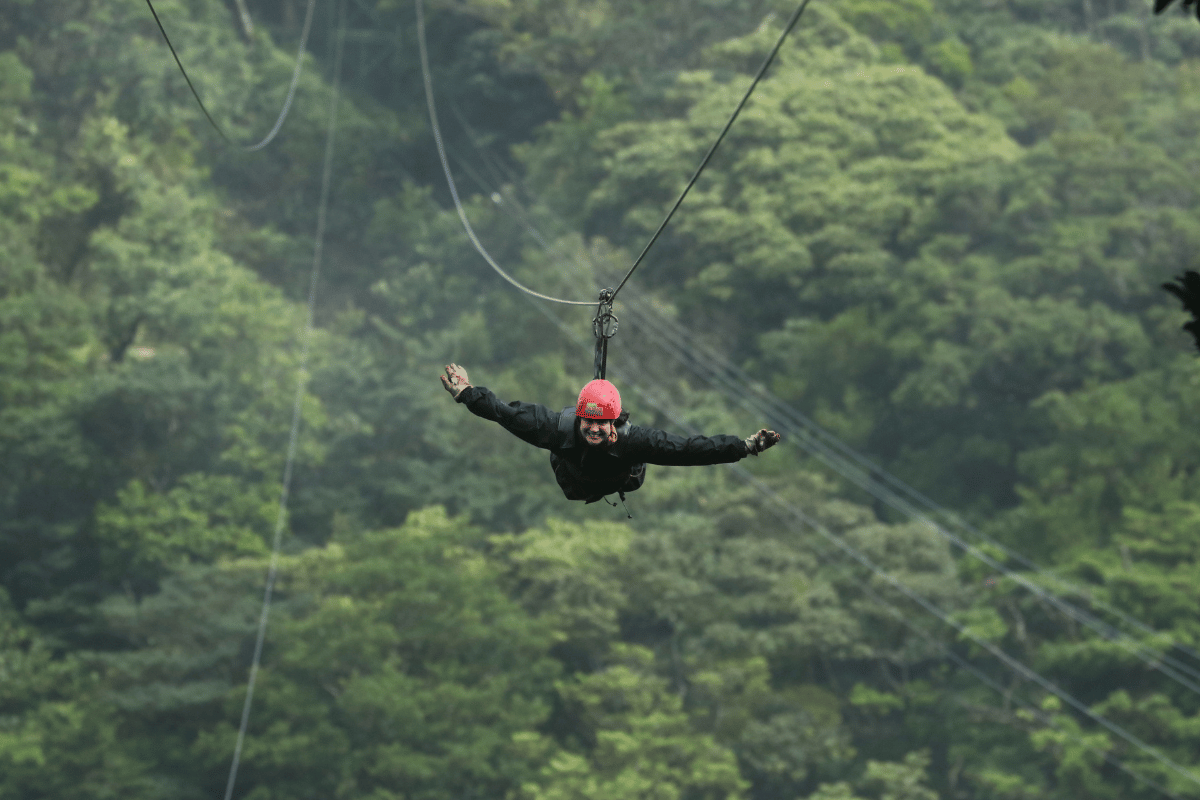The Monteverde Cloud Forest in Costa Rica is a world-renowned destination for nature enthusiasts, particularly those with a keen interest in wildlife. This lush, misty forest is a haven for a rich array of animals, many of which are unique to the region.
Here’s some of the animals you may spot in the Monteverde Cloud Forest!
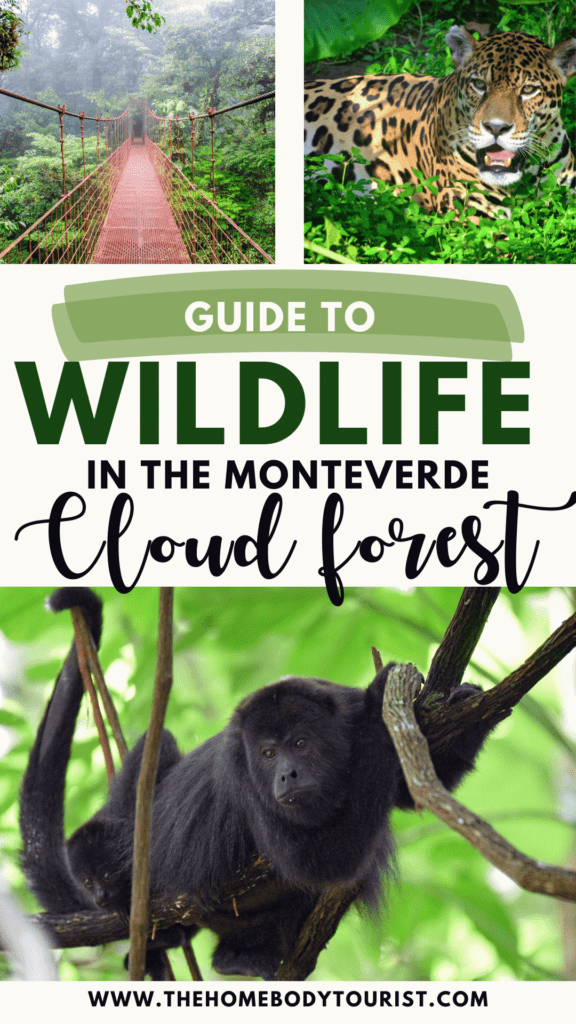
This site contains affiliate links to products. I may receive a commission for purchases made through these links at no extra cost to you.
Animals in the Monteverde Cloud Forest Reserve
Whether you’re a seasoned birdwatcher, a wildlife photographer, or simply a lover of nature, the Monteverde Cloud Forest offers incredible opportunities to observe animals in their natural habitat.
However, they are WILD animals. None of these sightings are guaranteed, but grab your binoculars and you may just get lucky.
Pro tip! Guided tours can significantly increase your chance for a sighting. They know exactly what to look for!
1. The Resplendent Quetzal: A Jewel of the Cloud Forest
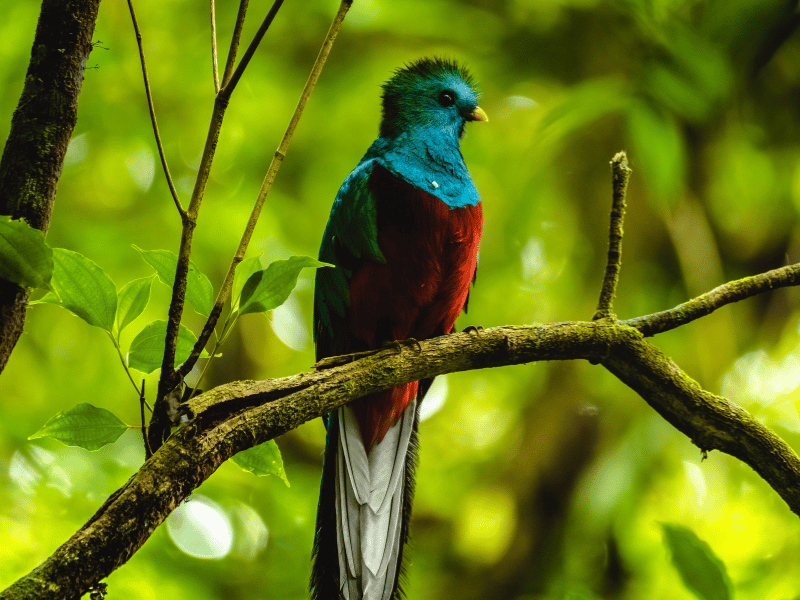
One of the most iconic species in Monteverde is the Resplendent Quetzal, a bird so beautiful it was once revered by ancient civilizations. Known for its vibrant green and red plumage, the Quetzal is most easily spotted between March and June during its breeding season. Male Quetzals are especially striking, with their long, iridescent tail feathers that can extend up to three feet.
Where to Spot Them: The Monteverde Cloud Forest Reserve is one of the best places in the world to see these birds. Early morning is the best time to catch a glimpse, particularly along trails like the Sendero Los Quetzales.
2. The Elusive Jaguar: A Rare Encounter
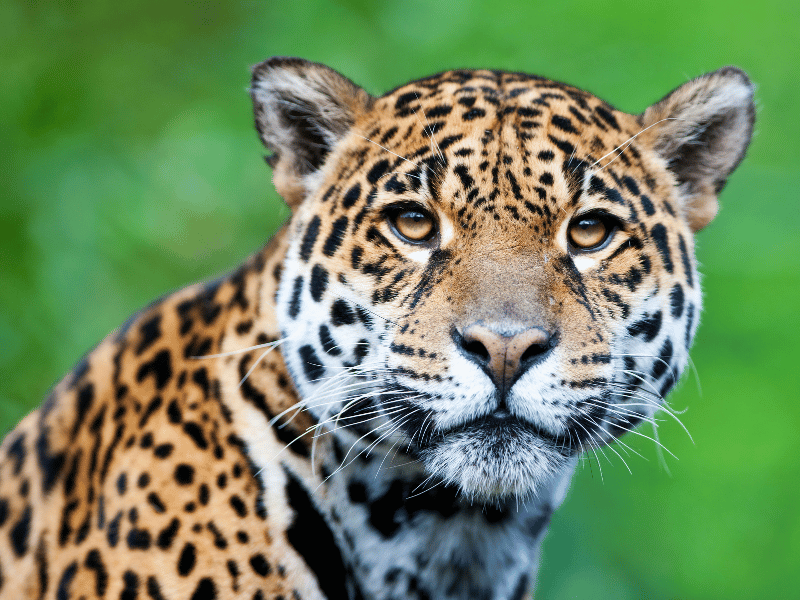
The Jaguar, the largest cat in the Americas, roams the forests of Monteverde, though sightings are rare due to its elusive nature. Jaguars are apex predators and play a crucial role in maintaining the balance of the ecosystem. Their presence in Monteverde is a testament to the health of the forest.
Where to Spot Them: Spotting a Jaguar is extremely rare, but knowing that these magnificent creatures inhabit the area adds a sense of wonder and excitement to any hike. The best chance of seeing signs of a Jaguar, such as tracks or scratch marks, is deep in the less-traveled areas of the reserve.
3. Three-Wattled Bellbird: A Unique Call

The Three-Wattled Bellbird is another distinctive species found in Monteverde. It gets its name from the three long, fleshy wattles that hang from its beak. However, it’s their call that really sets them apart—it’s one of the loudest bird calls in the world and can be heard from over half a mile away.
Where to Spot Them: Bellbirds are often heard before they are seen. The best time to spot them is during their breeding season, from March to July, particularly on the trails that lead to higher elevations.
4. Baird’s Tapir: A Gentle Giant
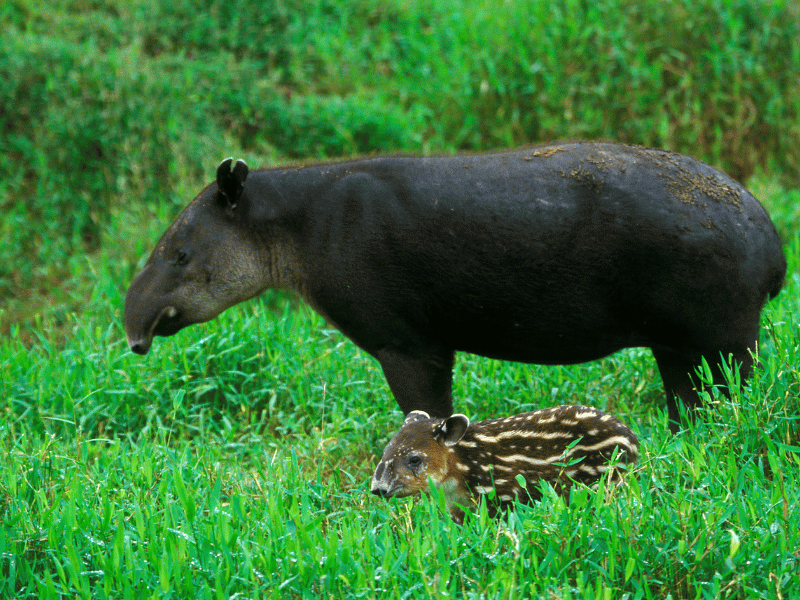
Baird’s Tapir, the largest land mammal in Central America, is a fascinating resident of the Monteverde Cloud Forest. These gentle giants are herbivores, feeding on leaves, fruits, and twigs. With their distinctive long snouts, they are often compared to pigs, though they are more closely related to horses and rhinoceroses.
Where to Spot Them: Tapirs are nocturnal and tend to be shy, so spotting one is a rare and special experience. They are more likely to be seen at night or during the early morning hours, near water sources within the reserve.
5. Howler Monkeys: The Voice of the Forest
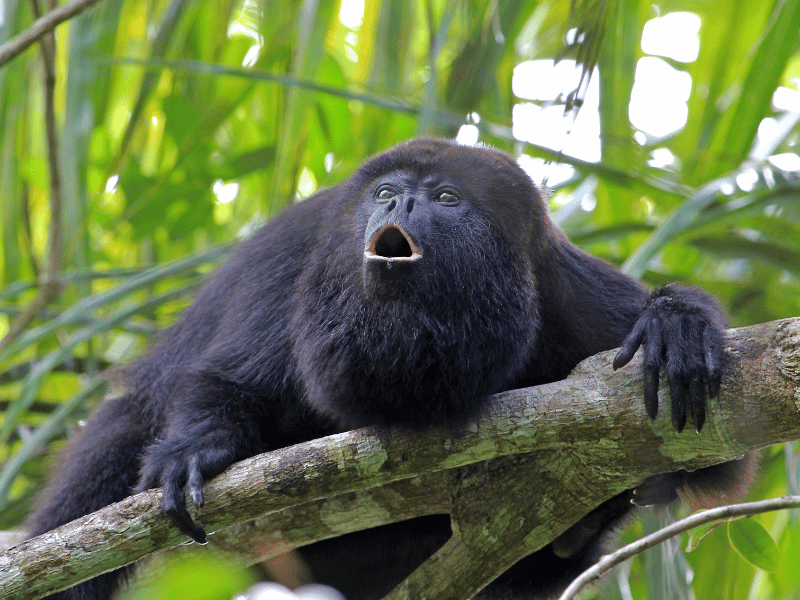
Howler monkeys are one of the most easily recognized animals in Monteverde, thanks to their loud, guttural calls that can be heard echoing through the forest at dawn and dusk. These primates are known for their prehensile tails, which they use like a fifth limb to grasp branches as they move through the treetops.
Where to Spot Them: You’re more likely to hear howler monkeys before you see them. Listen for their calls in the early morning or late afternoon, particularly along the Sendero Bosque Nuboso or the Sendero Camino trails.
6. The Colorful Frogs of Monteverde
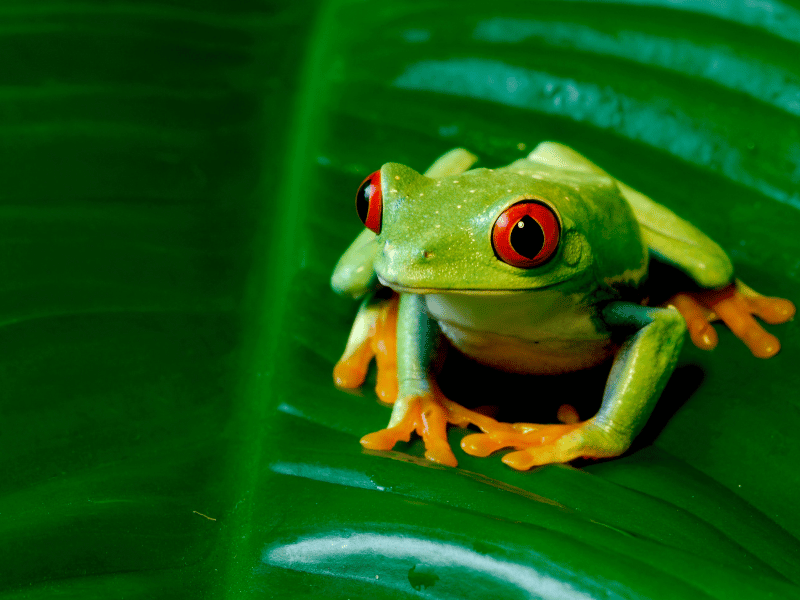
Monteverde is home to a variety of colorful frog species, many of which are incredibly photogenic. The most famous is the Red-Eyed Tree Frog, known for its bright green body, red eyes, and blue-striped sides. Another notable species is the Glass Frog, which has translucent skin that allows you to see its internal organs.
Where to Spot Them: Frogs are most active at night, so a guided night walk in the reserve is the best way to spot them. Look for them near streams, ponds, and other damp areas within the forest.
7. Coatis: The Cloud Forest’s Curious Critters
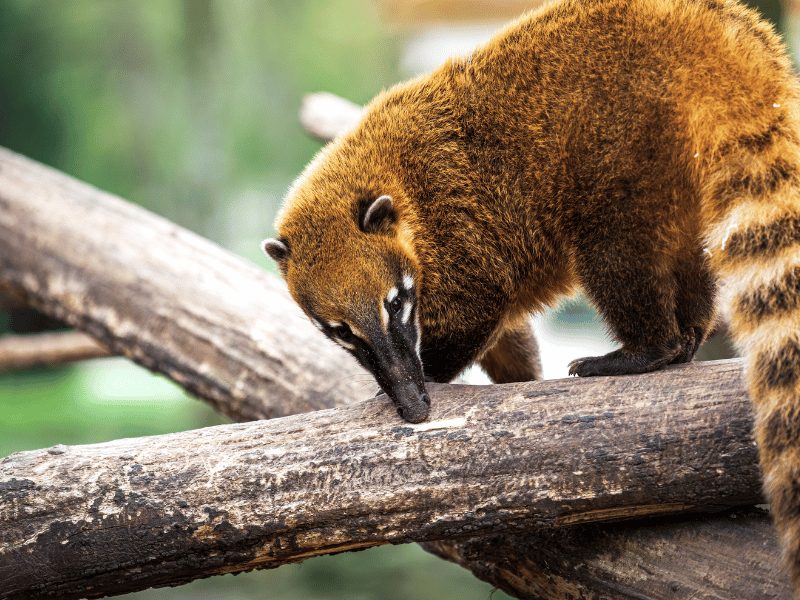
Coatis, also known as coatimundis, are members of the raccoon family and are frequently seen in Monteverde. These curious and intelligent animals are easily recognized by their long snouts and bushy tails. They are often spotted in groups, foraging for food on the forest floor.
Where to Spot Them: Coatis are active during the day and are commonly seen along the main trails in the reserve. They are not particularly shy, so you may get a good look at them as they scurry through the underbrush.
8. Butterflies and Moths: Winged Wonders
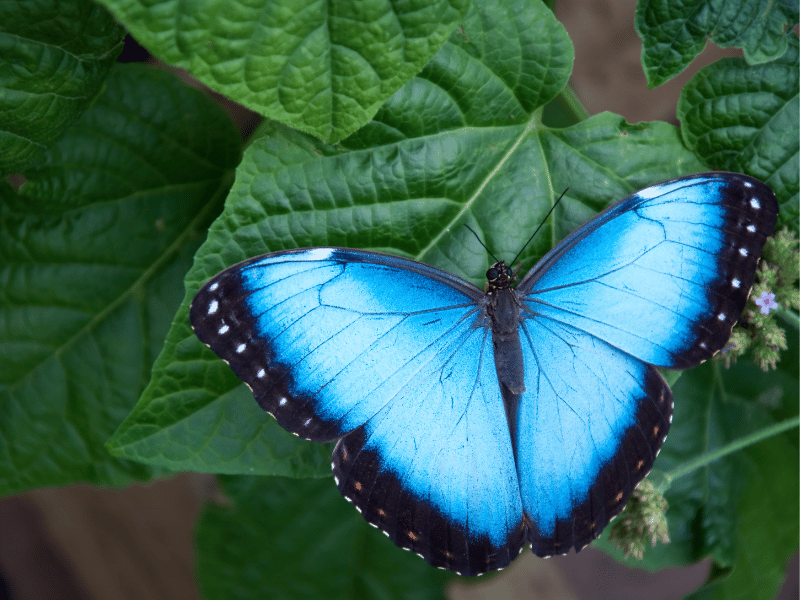
Monteverde is a paradise for butterfly lovers, with over 1,200 species of butterflies and 5,000 species of moths. The most famous is the Blue Morpho, with its large, iridescent blue wings that shimmer in the sunlight. The forest is also home to the Glasswing Butterfly, known for its transparent wings.
Where to Spot Them: Butterflies can be seen throughout the forest, particularly in sunny clearings and along trails. The Monteverde Butterfly Gardens also offers a chance to see a variety of species up close.
9. The Resilient Armadillo: A Solitary Forager
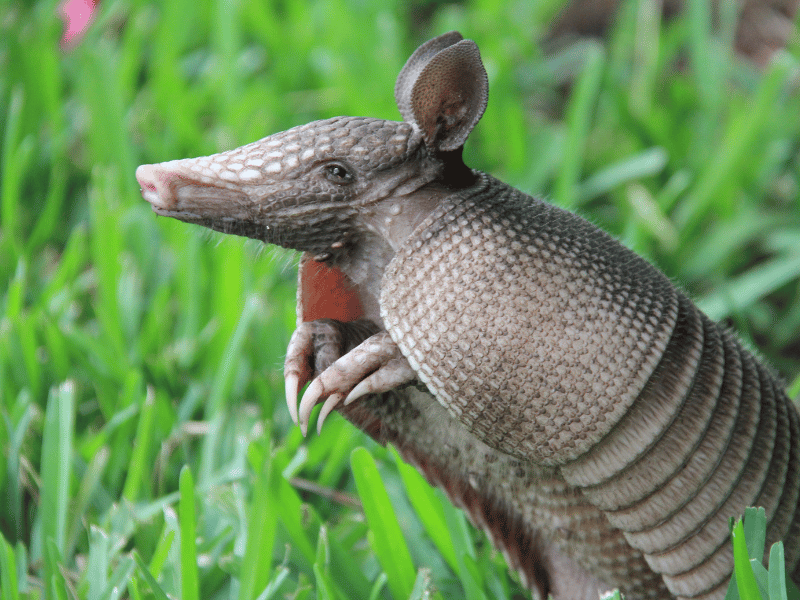
Nine-banded armadillos are common in Monteverde, recognizable by their hard, armored shells. These solitary creatures forage for insects, worms, and other small invertebrates on the forest floor. They are mostly nocturnal but can sometimes be seen during the day, especially in quieter areas of the reserve.
Where to Spot Them: Look for armadillos in the early morning or late afternoon along the trails, particularly in areas with loose soil where they can dig for food.
10. The Ocelot: A Stealthy Predator
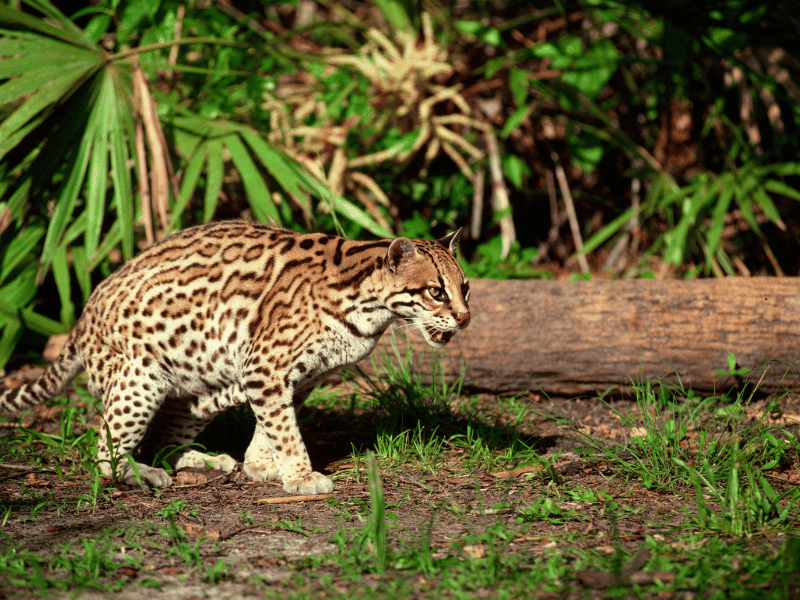
The Ocelot, a small wild cat with a strikingly beautiful coat of golden fur marked with black spots and stripes, is another elusive predator that calls Monteverde home. Though smaller and less powerful than the Jaguar, the Ocelot is a skilled hunter, preying on small mammals, birds, and reptiles.
Where to Spot Them: Ocelots are nocturnal and highly secretive, making them difficult to spot. However, sightings have been reported in the more remote parts of the reserve, particularly during dawn and dusk.
Final Thoughts: Wildlife in the Monteverde Forest Reserve
The Monteverde Cloud Forest Reserve is a treasure trove of biodiversity, offering a unique opportunity to see a wide variety of animals in their natural environment. Whether you’re marveling at the sight of a Resplendent Quetzal, listening to the eerie calls of Howler Monkeys, or catching a glimpse of a rare Jaguar, the wildlife in Monteverde is sure to leave a lasting impression.
For the best experience, consider hiring a local guide who can help you spot these amazing creatures and share insights into their behaviors and habitats.
Monteverde is a place where the magic of nature comes alive, making it a must-visit for anyone with a passion for wildlife and conservation. Here’s a complete 3-day Monteverde itinerary to help you plan the perfect getaway!

